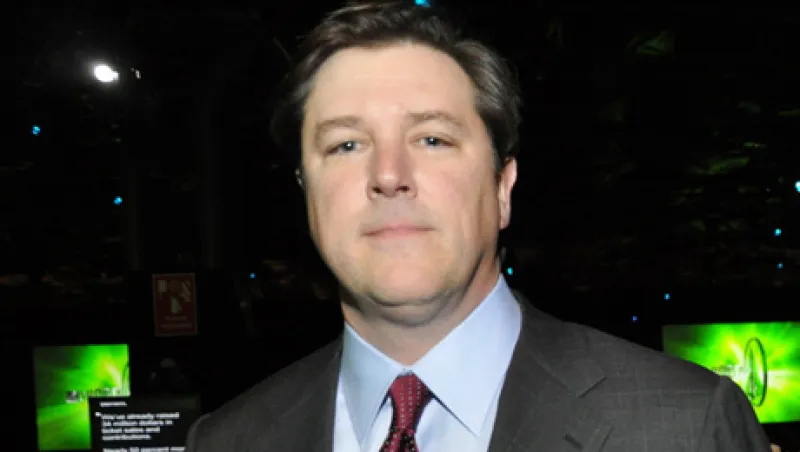Maverick Capital’s Lee Ainslie, who suffered one of the worst years among hedge fund managers in 2011, apologized to investors and asserted that he learned a number of lessons from the woeful performance.
“In Maverick’s eighteen-year history, we have never suffered a darker year than 2011,” Ainslie told clients in a letter dated February 5 and recently obtained by Institutional Investor. He assured them that future results would be consistent with his historical performance.
Such contrition is understandable given that the flagship Maverick Fund USA lost 14.7 percent in 2011, while the other portfolios fared even worse. Maverick Levered, for example, dropped 30.7 percent, Maverick Neutral Levered was down 17.1 percent, Maverick Long lost 17.5 percent and Maverick Long Enhanced fell 19.4 percent. Maverick Neutral was the best performer with losses of just 8.5 percent.
This marked the firm’s second losing year — the other being 2008, naturally — although Ainslie concedes in 2003 the underperformance with the broad market was even worse than in 2011.
In the letter, Ainslie, who launched Maverick in 1993 after serving as a managing director of Julian Robertson’s Tiger Management, especially bemoans that the past year’s woes resulted from what he called "avoidable" individual mistakes and insufficient risk constraints.
In fact, Maverick fund has rebounded so far this year, rising 6 percent in January and 8.82 percent through March 9. Ainslie attributes this strong start to the year to a healthy long/short spread rather than a high net exposure or beta. Ainslie also says he is very confident the early year’s success will be sustained, due in part to changes he made last year and the lessons he learned.
As an example, he cites the implementation of what he calls MavRank, a new system developed by his quantitative team over the past five years, which ranks stocks in his portfolio. MavRank is a sort of hybrid black box/fundamental system, drawing on common quant inputs but driven by the decisions made by real human beings.
It contains key data reflecting the firm’s analysis of every long and short investment and links financial statements of each investment. “Over the past year we have instituted a risk/reward metric that allows a quick review of underlying assumptions versus historical patterns,” Ainslie elaborates in the letter. “This approach allows us to delve into assumptions that may be aggressive and has helped us approach the consideration of risk versus reward for each individual position in a more consistent way across each sector.”
Ainslie stresses this system — which is not designed for a computer to pick stocks — has been in the works for several years.
At the same time, he concedes he has learned a number of important lessons from last year, many of them centered around risk control. For example, he says recent trends in volatility have led him to question the long-held policy of targeting volatility equal to half of the volatility of the S&P 500.
He points out that last October, the trailing 60-day volatility of the S&P 500 exceeded 37 percent — only the fourth time since 1938. Interestingly, when it hit this 37 percent level in 1988, it was the first time in 50 years. The next time it pierced this level was in 2002, 14 years later. Volatility once again exceeded that level in 2008, only six years later, and finally in 2011, a mere three years later. Get the pattern?
“The fact that recent volatility surpassed anything seen in a fifty-year period is staggering,” Ainslie writes, reminding clients that during that period, the U.S. experienced a World War, the Cuban missile crisis, a presidential assassination, the dollar going off the gold standard, New York City on the verge of bankruptcy, the OPEC oil embargo, 10-year Treasuries exceeding 15 percent and the savings and loan crisis. And these are just a few examples.
So why is it happening with more frequency? Ainslie points to globalization, high levels of debt, an uncertain regulatory environment, extreme monetary policies, unsustainable fiscal policies and uncertain currency policies.
The lesson here: expect further levels of high volatility in the future. As a result, he plans to maintain a much lower level of volatility in the core funds compared to in the recent past. In addition, Ainslie says he has lowered his long-held gross exposure target to 225 percent from 250 percent.
He concedes such a move would not have heavily impacted performance last year. But he does assert MavRank would have impacted things like position limits, which in turn would have improved returns and lowered the volatility of the returns.
This all constitutes a thoughtful analysis, but Ainslie certainly needed some sort of mea culpa to stem redemptions and reassure investors.
Of course, in the end, when it comes to hedge fund investors, the proof is in the performance. They will now, no doubt, be watching much more closely and with a little more skepticism.







